Wholesalers Shifting Gears
November 19, 2024 | 15 min to read
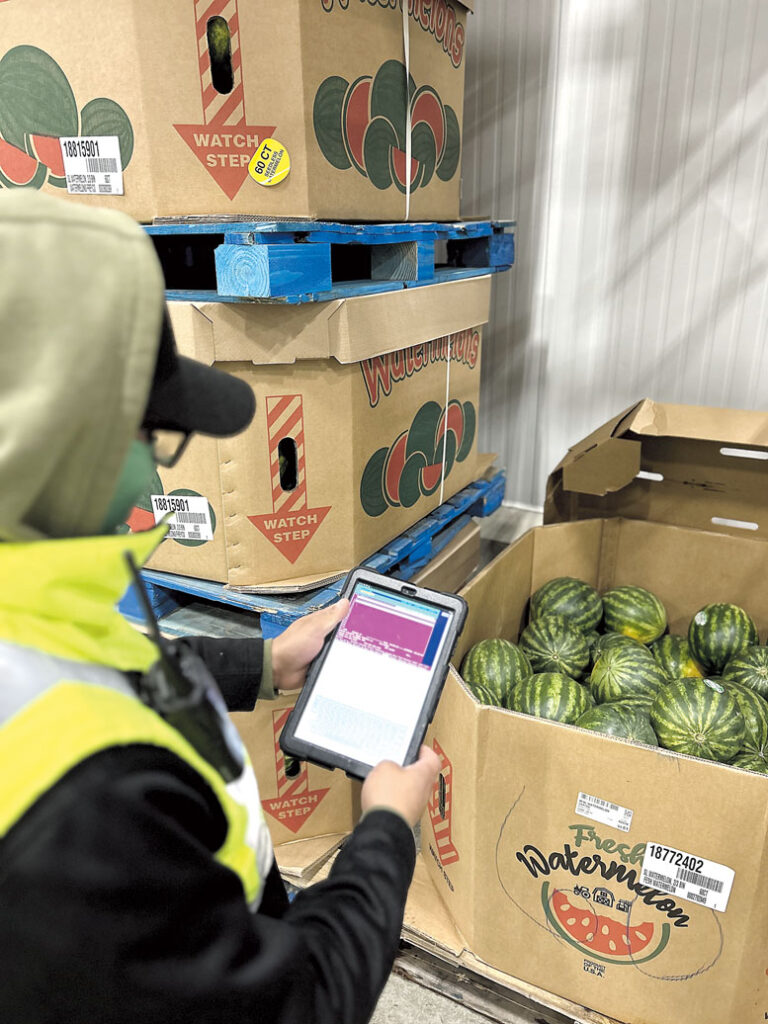
Wholesalers are using technology to better serve customers.
Technology is everywhere in the produce industry, and wholesaling is no exception.
“What used to happen with pen, paper and endless binders on desks is now all digital,” says Hutch Morton, senior vice president for J.E. Russell Produce in Toronto, Ontario. “We use our ERP for virtually everything in our operations. What it can’t do, we find solutions that can be layered on top of it.”
Technology has been positively impacting the industry for years, adds Stefanie Katzman, executive vice president at Katzman in Bronx, NY. “As a wholesaler/distributor, we have seen its effects up and down the supply chain. We have seen improvements in science at the growing level, better refrigeration in coolers and trucks, and more digital ads and in-store displays at retail.”
Technology implementation by wholesalers significantly enhances efficiency in interactions and transitions for Redner’s Markets in Reading, PA, with 44 stores. “Through advanced digital platforms, wholesalers streamline order processing, reducing manual entry errors and accelerating order fulfillment,” says Mark Cotê, regional produce supervisor. “Real-time inventory updates and automated stock alerts ensure we’re always informed about product availability, minimizing delays and out-of-stock orders.”
Wholesale technology gives customers tools to stay competitive. “As a produce supply chain partner to independent retailers and natural food stores that are not self-distributed, we need to implement technology solutions that keep us cost-efficient, accurate, compliant with regulations, and help prevent or solve problems for those customers,” says Jonathan K. Steffy, vice president and general manager at Four Seasons Produce in Ephrata, PA.
Ryan Dietz, president of Heartland Produce Co. in Kenosha, WI, explains it’s important for wholesalers to look for ways to service customers at a higher level by harnessing technological tools. “As we move into the future, I would expect to see wholesalers taking advantage of tech tools and AI to start assisting in sales and procurement tasks, such as inventory projections, purchasing optimization and data analytics,” he says.
It’s important for wholesalers to look for ways to service customers at a higher level by harnessing technological tools.
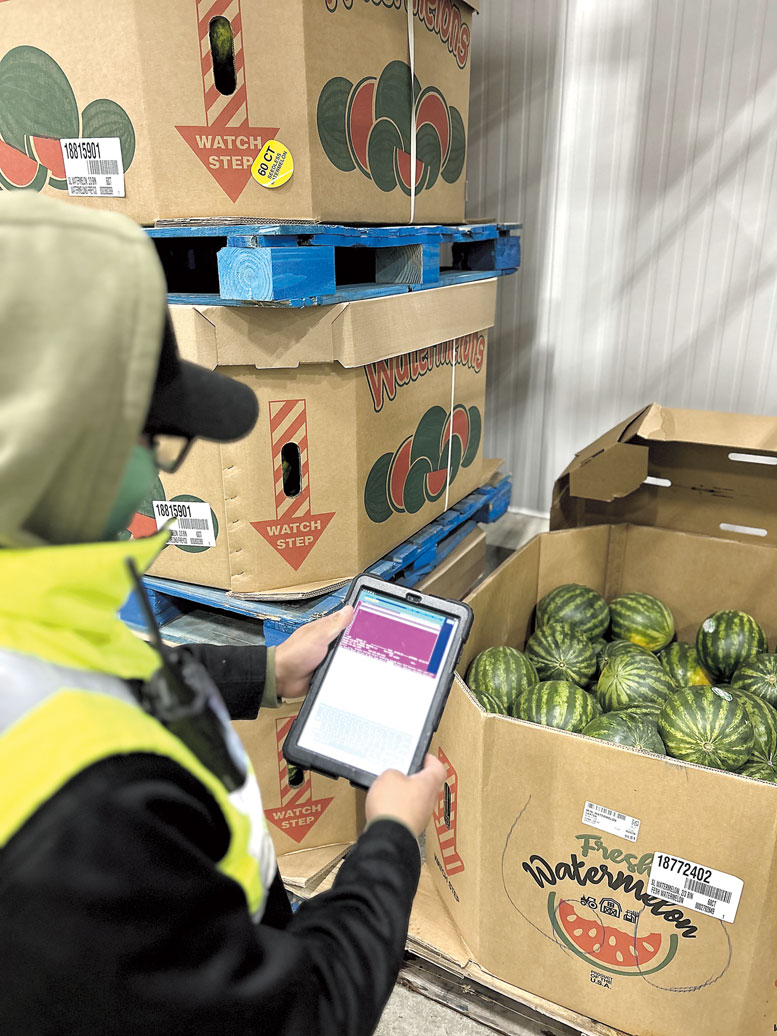
PHOTO COURTESY HEARTLAND PRODUCE
Wholesalers taking the extra step to ensure best arrival of product are the ones using available technology, says Talia Shandler, director of sales at S.G.S. Produce in Los Angeles, CA. “Apps and online ordering, traceability, and truck tracking are the heavy-hitting technology for us,” she says. “To evaluate if it’s worth the cost, we look if it saves us labor or helps our product keep or arrive better.”
Technology has pros and cons, says Joel Fierman, president of Fierman Produce in Bronx, NY. “It makes us more efficient in some areas, but for some aspects of our business, it just doesn’t work. There’s a reason some things have been done a certain way for so long. You can’t put everything on technology.”
STREAMLINING ORDERS
A major use of technology in wholesale is online ordering. “The overwhelming majority of customers expect to be able to order online or via an app,” says Billy Itule, chief executive at Willie Itule Produce in Phoenix, AZ. “This is how chefs, GMs and corporate procurement want to engage us.”
Customers want more convenience, so online ordering has become more prominent with bigger wholesalers, says Johnny Karrat, director of sales and operations at Capital City Produce in Troy, NY. “We see online ordering becoming the mainstream way of ordering through a wholesaler in the near future,” he says.
Though Rubinette Produce Market in Portland, OR, is a small retailer with minimal tech needs, online ordering is key. “Our needs are primarily in the areas of accurate inventory management, online ordering and logistics information,” says Josh Alsberg, owner.
Online processes help ensure accuracy. “The accuracy of taking and giving orders is light-years ahead of where it used to be,” says Gabriela D’Arrigo, vice president of marketing and communications at D’Arrigo New York in Bronx, NY. “The system will stop the order if things don’t match up, for example, if the customer is over the credit limit or if the order doesn’t match what came in. It’s still the same process at the core, but the implementation of technology in that same process makes it more efficient.”
An important change at J.E. Russell in the past few years is how every order is entered directly into the system by a salesperson with a constant view into inventory and availability, explains Morton. “Gone are the days of calling a customer who has already left the terminal to say we shorted their order,” he says.
Indianapolis Fruit, Indianapolis, IN, is launching a new online app, Pepper. “The produce manager can use it in-store on their phone or at a computer,” says Tony Mitchell, chief revenue officer. “They can see inventory and pictures on items. It’s a new level for us; as we’ve added more companies under our umbrella, we need new technologies to better service our customers.”
D’Arrigo New York launched its online ordering platform about two years ago for select customers. “This has been a more streamlined process for a lot of our independents with multiple stores,” says D’Arrigo. “Every order is still reviewed and there are still conversations taking place, but it makes the process more efficient. It’s linked to our inventory so customers can see what’s available and their ordering history to help them better plan their orders.”
Compatibility of systems is a key consideration. “We must deliver a technology experience to customers that’s easy to use, reliable, and works seamlessly with the systems national restaurant brands use,” says Itule.
Rick Feighery, vice president of sales for Procacci Brothers Sales Corporation in Philadelphia, PA, mentions the increase of purchase order transmission programs such as iTrade, Petal and Procurant. “Each group uses their own portal system, and we as wholesalers, adapt,” he says.
BEYOND ORDERING
Technology linked to electronic ordering and fulfillment provides additional support. “Software that transitions buy-sell functional transactions from phone calls, spreadsheets, or emails to digital integration via EDI or portals/apps is something we’re excited about,” says Four Seasons’ Steffy.
“But, digitizing cannot be done at the expense of person-to-person relationships,” he cautions. “Done right, digitizing has the potential to give busy buyers and sellers more time to invest in the collaborative aspects of customer-supplier partnerships.”
Katzman notes many customer requests around technology are related to EDI invoicing. “Customers no longer want to receive paper or even emailed invoices,” she says. “They want to securely receive invoices directly into their systems.”
Indianapolis Fruit uses the Billfire app, where customers can go online, look at their invoices and pay. “We’re trying to get as many of our independent customers on it as possible,” says Mitchell.
To effectively service the technology-driven customer, Galera Fresh in Chicago, IL, focuses on accurate inventory. “That means constant software upgrades to include the ever-evolving commodities, sizes and weight,” says Francine Cossyleon, chief communications officer. “We want to provide our buyers the most up-to-date information so they can make the best decisions.”
Heartland uses analytics software for greater insight into customer, vendor and commodity trends. “This helps our sales and buying teams make better decisions and gives them appropriate insight to help guide them forward,” says Dietz. “We will be working on a solution to move invoices and BOLs to electronic documents. Customers will have the option of signing drivers out on a tablet or other mobile device, and then receive an electronic invoice.”
A particular technology Four Seasons thinks could be helpful to multi-store independent retailers and wholesale partners is Empower Fresh. “It provides AI-assisted ordering, ad writing and pricing tools, real-time data, and more,” Steffy says.
Empower Fresh of Kansas City, MO, is a SaaS solution to optimize produce departments in independent retail grocery stores, as well as produce operations within the suppliers that distribute to them. “The retail product is currently in 50-plus stores over five independent retail groups,” says Robert Austin, president. “The wholesaler product is about to enter pilot phase with a few different wholesalers. The product will lend major benefits to wholesalers of all sizes, focusing on ordering for their customers and optimizing the process.”
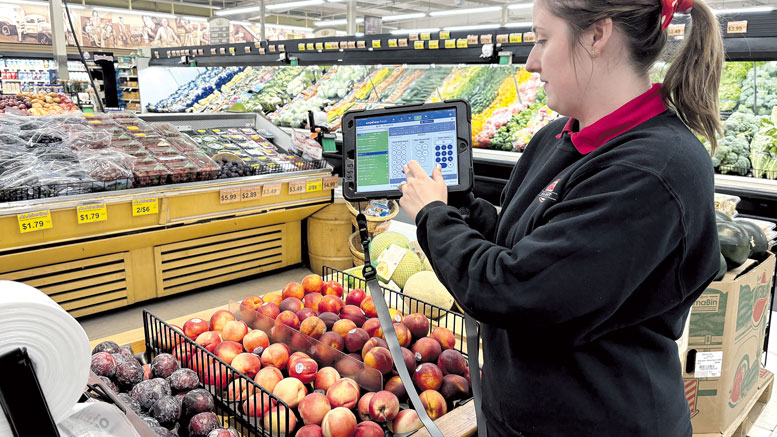
PHOTO COURTESY OF EMPOWER FRESH
Bashas’ Family of Stores in Chandler, AZ, with 118 stores, uses Afresh to improve in-stock conditions and inventory control. “Afresh is an AI-powered ordering system made for grocery store fresh departments such as produce,” says Darin Eastridge, Bashas’ senior category manager of produce. “It helps manage produce inventory at store level and predict how much product is needed to make ordering easier by considering the unique challenges of fresh items.”
Joseph Procacci III, Procacci vice president of business development, explains their technology has been evolving to predict customer needs and ordering patterns. “This enables us to be better prepared to service customers,” he says. “And, we can use forecasting models for items based on ordering patterns that automatically populate purchase orders for vendors.”
Nickey Gregory Company in Forest Park, GA, just implemented another upgrade with its operating system, Produce Pro/Apteen, according to Andrew Scott, vice president of business development and marketing. “We upgraded our online ordering, updated our wireless picking and pulling of live/real-time orders, and revamped retail functions to give our customers better pricing tools,” he says.

PHOTO COURTESY NICKEY GREGORY
Digital capability has benefited sales staff at John Vena Inc. (JVI) in Philadelphia, PA. “Our customers can call the store number, but get linked to a salesperson working remotely,” says Dan Vena, director of sales. “The salesperson has access to all information and inventory they need wherever they are. This remote capability has allowed us to keep people on staff when they can’t be in the office all the time.”
EFFICIENT PRODUCT MANAGEMENT
Wholesalers implement technology to improve how they handle product. “The produce business moves so fast that doing things with a pen and paper just doesn’t cut it anymore,” says Capital City’s Karrat. “Higher volume requires better recordkeeping and inventory management systems. A better grasp of in-house operations means a better and more efficient output to customers. At Capital City, we are working on an in-house warehouse management system to coincide with our food safety program.”
By integrating advanced solutions such as inventory management systems, real-time data analytics, and automated ordering processes, retailers and wholesalers can achieve greater efficiency and accuracy, says Redner’s Cotê.
“Wholesalers benefit from streamlined logistics and improved communication channels, facilitating timely replenishment and reducing out-of-stocks,” he says. “Additionally, using technology to manage supply chain operations ensures transparency and traceability, fostering trust between partners.”

PHOTO COURTESY KATZMAN
Computer systems have been a game-changer in wholesale markets, according to Katzman. “With the amount of products we sell now, tracking inventory on paper wouldn’t be possible,” she says. “Wholesale markets are based on volume, both on how fast it’s moving and how much is actually left to sell, so having this information live and easily accessible is paramount to our success.”
“Wholesale markets are based on volume, both on how fast it’s moving and how much is actually left to sell, so having this information live and easily accessible is paramount to our success.”
— Stefanie Katzman, Katzman, Bronx, NY
Procacci uses an ERP system called ProducePro, which the company has adjusted to the changing needs of the business and industry. The operating system handles all aspects of sales, purchasing, traceability, accounting functions, and order selection, says Feighery.
“With the volume of items and demands of our customers, I cannot imagine operating without a real-time reliable system,” he adds. “The biggest change coming in the next few months on the operational side is achieving the goal of going completely paperless with scan guns, as all departments integrate into our WMS.”
Indianapolis Fruit uses scanners to receive and all its internal selectors have a screen system on their wrist, according to Mitchell.
Galera Fresh implemented a warehouse technology process, including high-speed internet to give pickers the ability to scan orders and boxes. “It has created an environment for accuracy,” says Cossyleon. “Scanning allows for less human error, and a better, more streamlined process for traceability.”
Morton points out inventory management and eliminating shrink is a key operational tenet at every link in the supply chain, but possibly no more important than at wholesale. “Having our ‘available to sell’ in the order-taking process eliminates all questions about stock levels for customers and salespersons,” he says. “We are looking to a more direct connection to customers through an app to provide immediate promotional opportunities when product must go.”
MANAGING LOGISTICS
Technology enables wholesalers to have a better handle on inbound and outbound deliveries. “Whether it’s shipping trucks expected to our warehouse or our own trucks making deliveries, this is an absolute necessity,” says D’Arrigo. “You’re flying blind if you don’t have it.”
Procacci’s in-house truck tracking system pinpoints when and where they’re making a delivery, and routing platforms suggest the most efficient way to put loads together based on delivery. “We use a GPS system for our merchandising visits to route out stores needing a visit,” says Procacci. “This helps our merchandisers line up their day. It pulls potential customer visits based on possible issues or if they’ve recently ordered.”
This year, J.E. Russell launched fleet management and monitoring. “When a customer asks when the truck will arrive, the answer is only a few clicks away rather than multiple phone calls,” says Morton. “Customers have nudged us toward solutions to improve the customer experience. At the end of the day, that’s everything for our business.”
S.G.S. Produce is able to know all about the truck in real time. “This includes how long it’s been waiting at a specific location and if the reefer is active and at the right temperature,” says Shandler. “We’re always exploring how we can use technology to enable us to ensure our product arrives at our customer and in the right condition.”
Technology in the ripening arena is also boosting wholesaler efficiency. Vena remarks on JVI’s increased ripening ability due to technology. “We’re constantly ripening because with the new technology, we don’t need someone physically present all the time,” he says. “Our ripening platform allows our ripeners to log in, view all the specs, make decisions based on how the fruit is ripening and change the settings — all from a phone or computer.”
MAKING FOOD SAFER
Technology provides opportunity in food safety and quality control, particularly with compliance. “As we work toward FSMA 204 compliance, we will all need to lean heavily on technology to implement solutions that don’t cost huge dollars in new processes to track the required data elements,” says Heartland’s Dietz. “We partnered with ReposiTrak for food safety vendor compliance, and it has helped lower our costs in management of this process.”
D’Arrigo speaks to the unique position of the wholesaler in traceability. “We reach back to supply and forward to the customer,” she says. “We keep a digital live database that can be traced back to details at the grower, and traced forward to the details of the customer.”
Katzman’s computer system has box-level traceability, allowing the company to track all product through to customers. “We have our customers’ food safety contacts and preferred methods of communication so our food safety team can execute quickly if needed,” says Katzman.
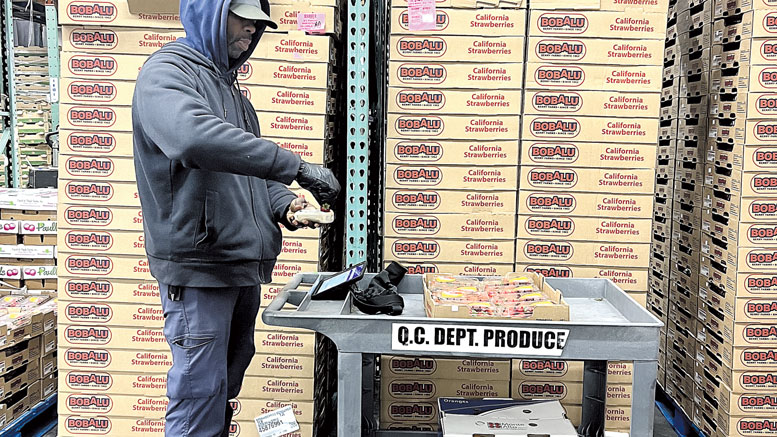
PHOTO COURTESY KATZMAN
Warehouse management technology allows Willie Itule Produce to respond quickly when recalls are issued. “The data allows us to connect with impacted customers and provide them with granular details about the recalled product they may have in their possession,” says Itule.
Traceability is a major benefit of J.E. Russell’s robust ERP system. “Tracking a product from procurement to sale through all of the operational flows between has dramatically simplified our traceability,” says Morton. “Creating and sharing QC reports and photos is another wonderful by-product of a digital world.”
Nickey Gregory’s food safety team uses its operating system to perform quarterly mock recalls. “We also store current food safety information from our vendor partners and COI updates as insurance expires,” says Scott.
HARNESSING DATA
Wholesalers are using tech to provide useful information to customers. “Data analytics and reporting features provide valuable insights into purchasing trends and inventory needs, enabling more strategic planning and forecasting,” says Redner’s Cotê. “This technological interaction simplifies logistics and strengthens our collaborative relationship, driving mutual success and operational excellence. For retailers, technology provides insights into consumer behavior and stock levels, allowing for better demand forecasting and personalized marketing strategies.”
Information from D’Arrigo New York’s platforms provides order history and market trends. “This gives us a better idea of where the market should be and what items we should focus on,” says D’Arrigo. “It’s been good for our customers because we have a bigger picture and better idea of where their business is.”
Produce Pro houses a helpful sales analysis tool that Nickey Gregory uses for customer and vendor reviews. “The analysis dives into buying patterns and past movement of our customers and helps our sales team better serve our accounts,” says Scott.
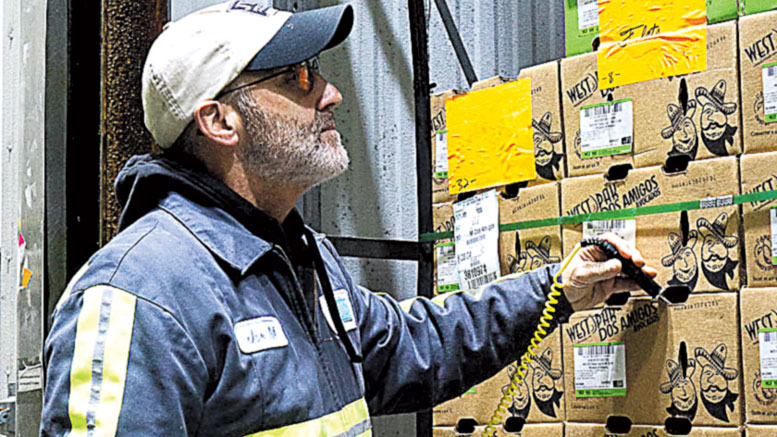
PHOTO COURTESY JVI
Galera Fresh relies on data. “Staying afloat of feedback is essential in identifying trends and can really help maximize efficiency in every department,” says Cossyleon.
In the future, Shandler hopes to use systems resulting in actionable data. “There is a lot of hype about AI but, at the end of the day, accessing the data isn’t always in the format we need,” she says. “I’ve been looking for a good AI tool to help get more insight or have a fresh perspective of the data.”
AI functionality is already being integrated into ERP, procurement, WMS, and sales software, describes Itule. “Getting value out of next-gen functionality is an area wholesale produce businesses should spend time thinking about,” he says. “There are use cases in customer service, food safety, traceability, and business operations that can add enormous value. It’s reasonable to think that within five years AI-centric customer experiences and traceability standards will be table stakes in the same way that online ordering and WMS technologies are now.”
15 of 23 article in Produce Business November 2024

